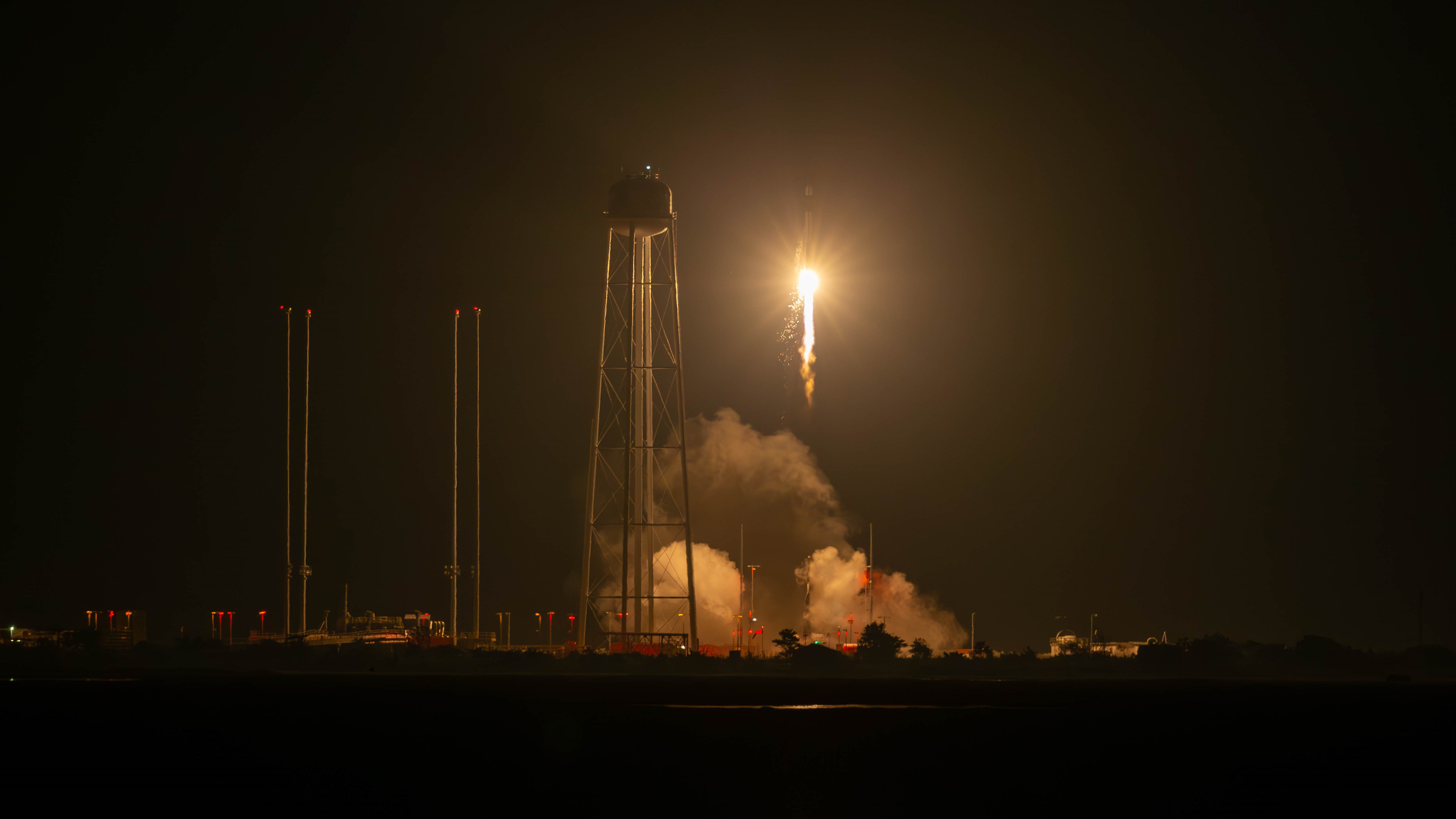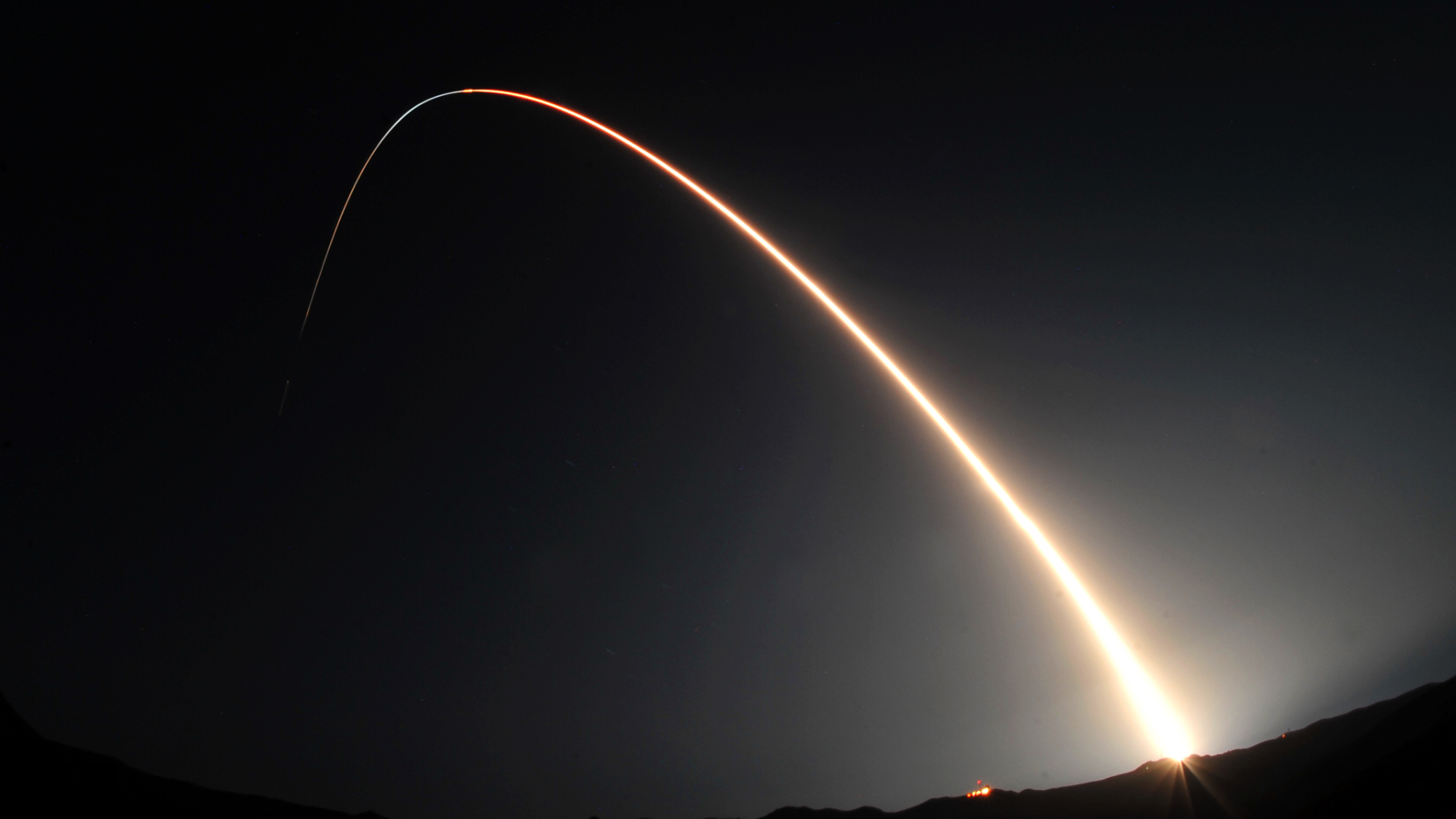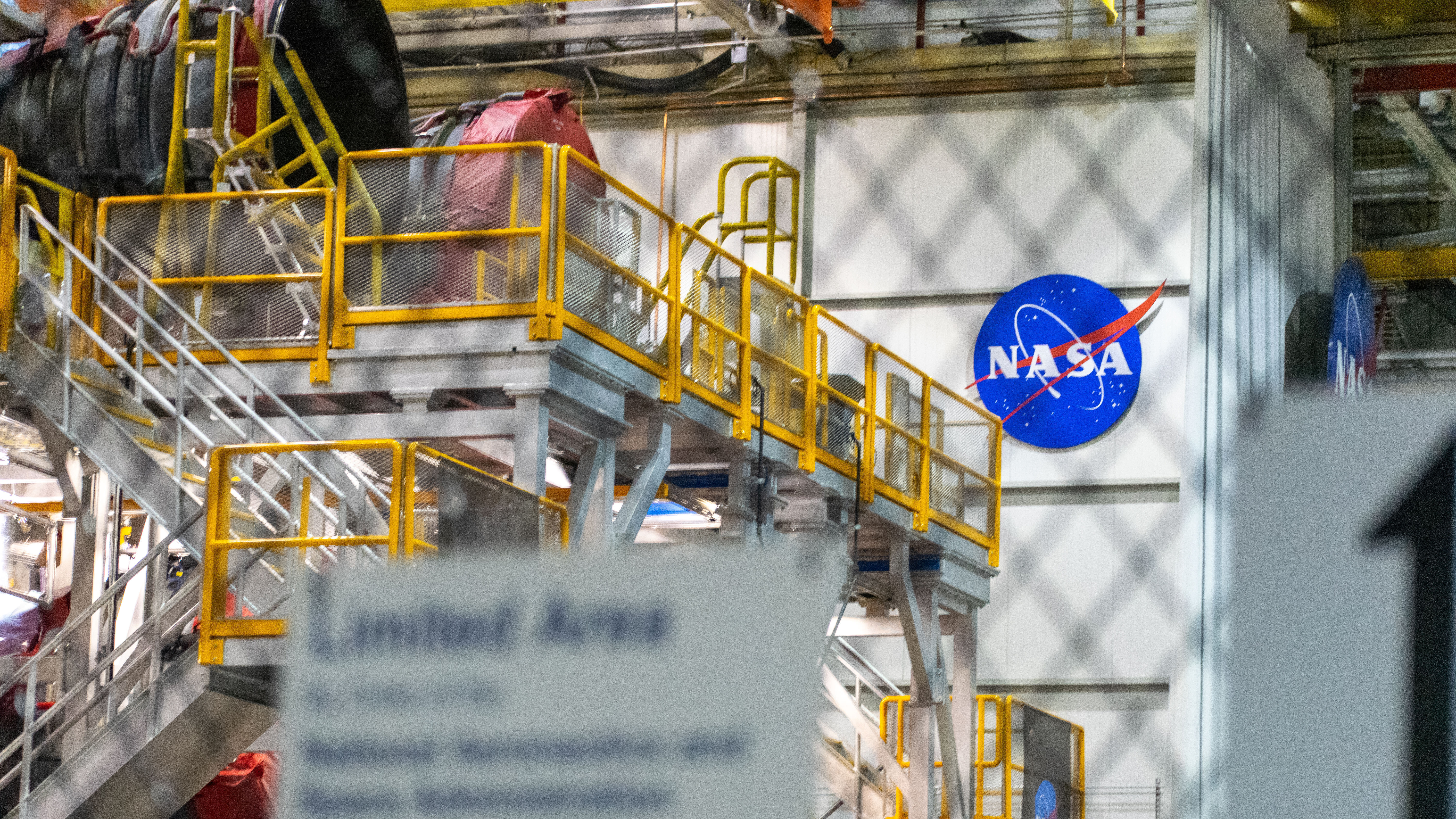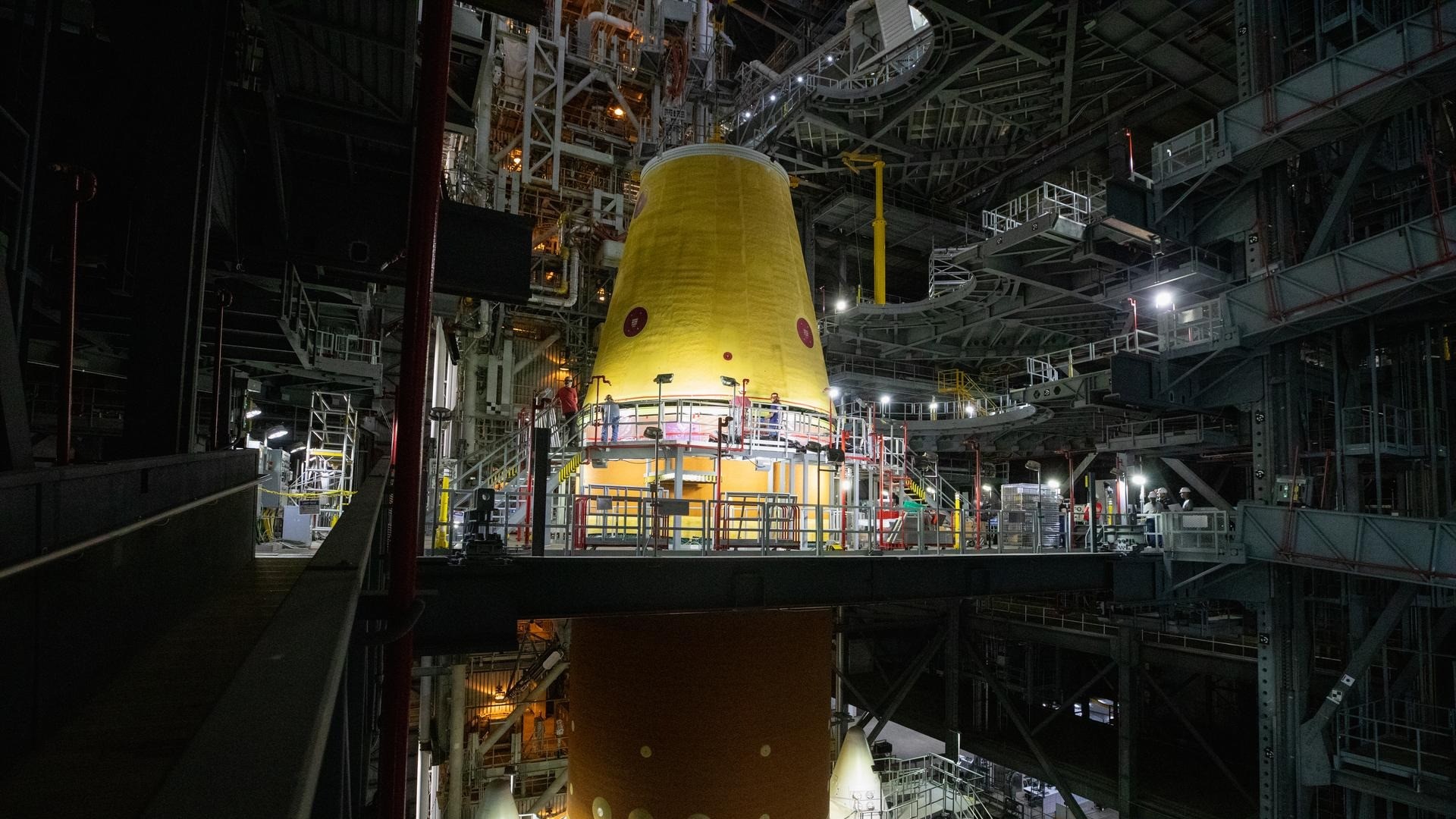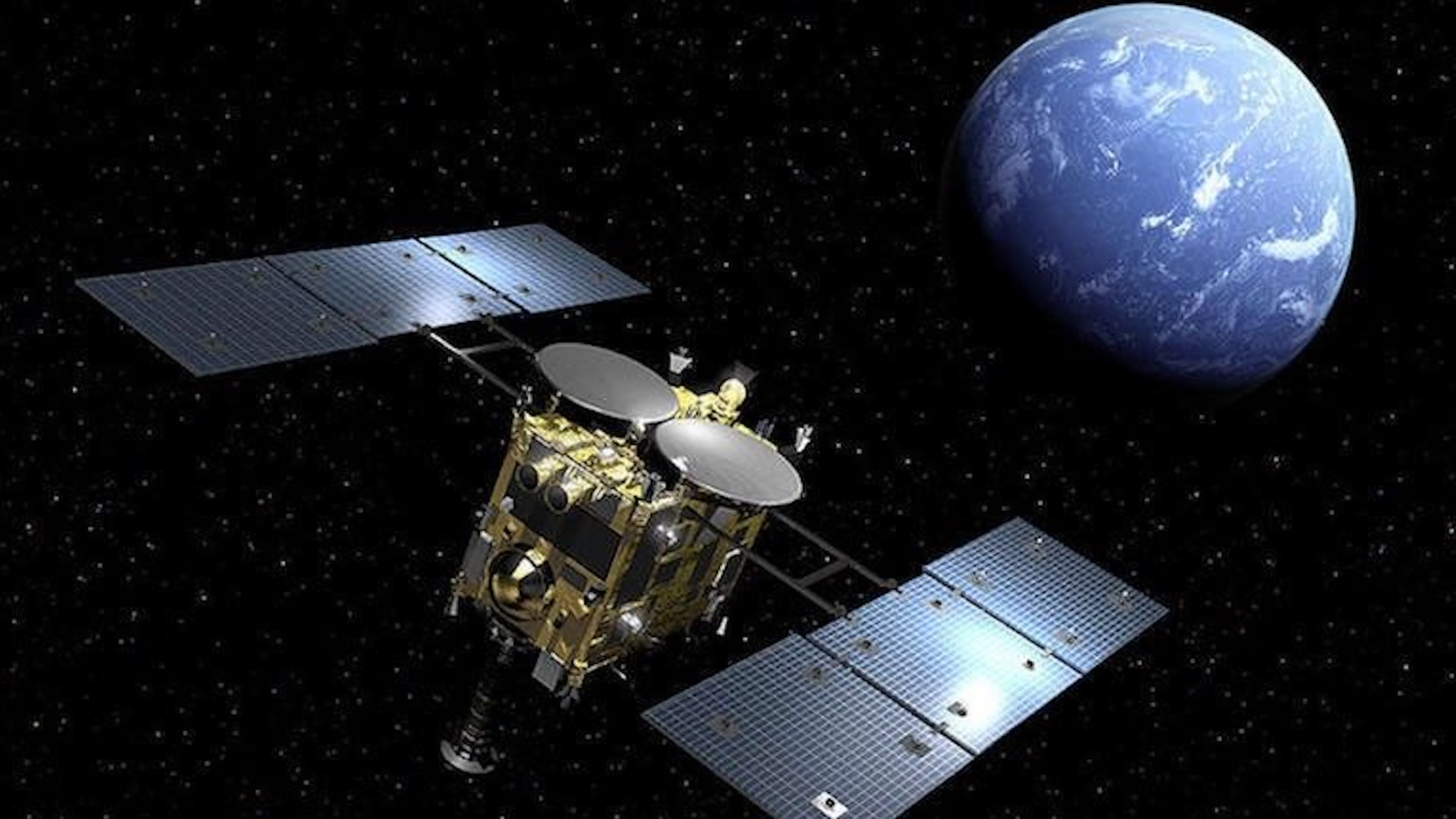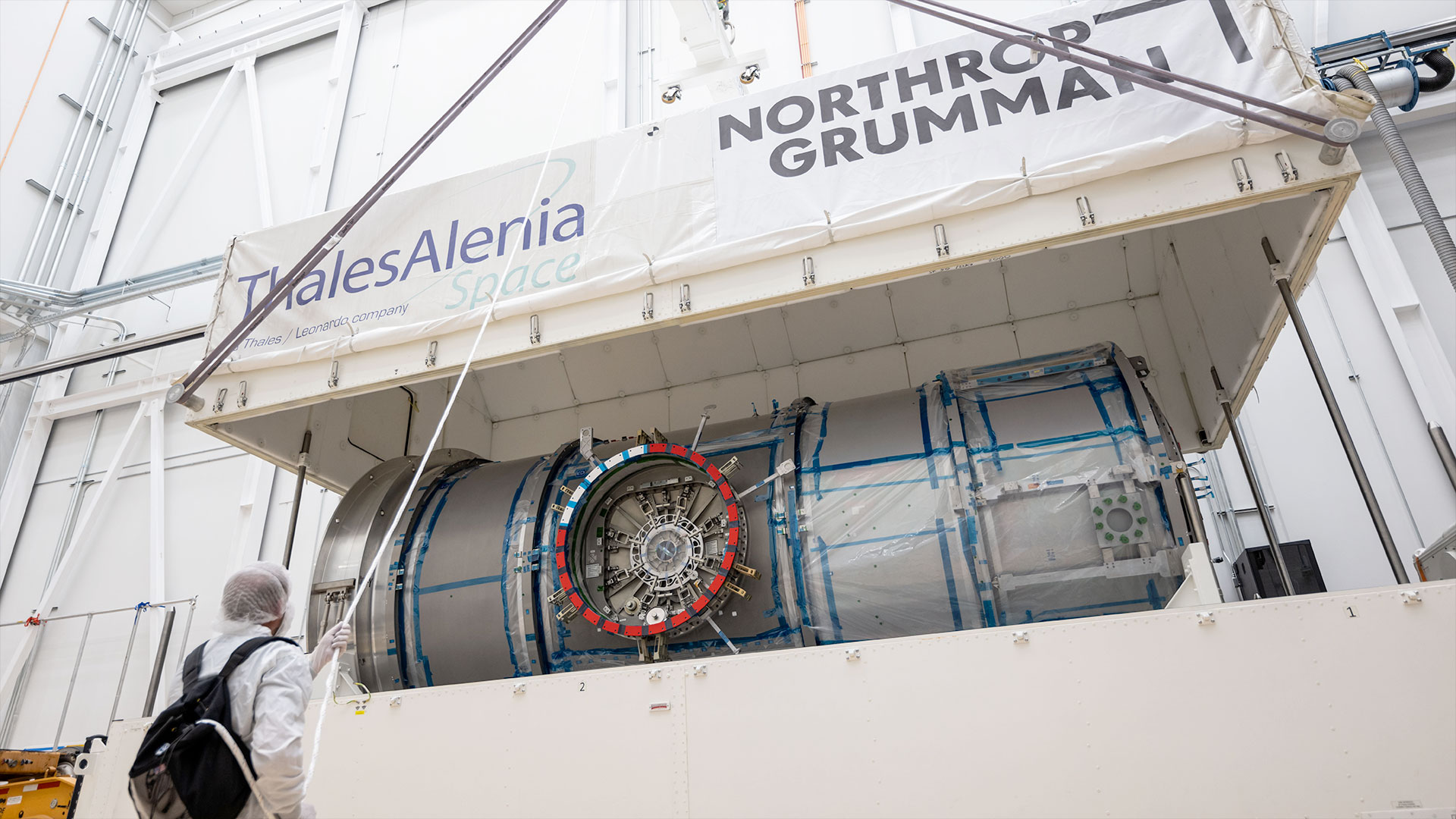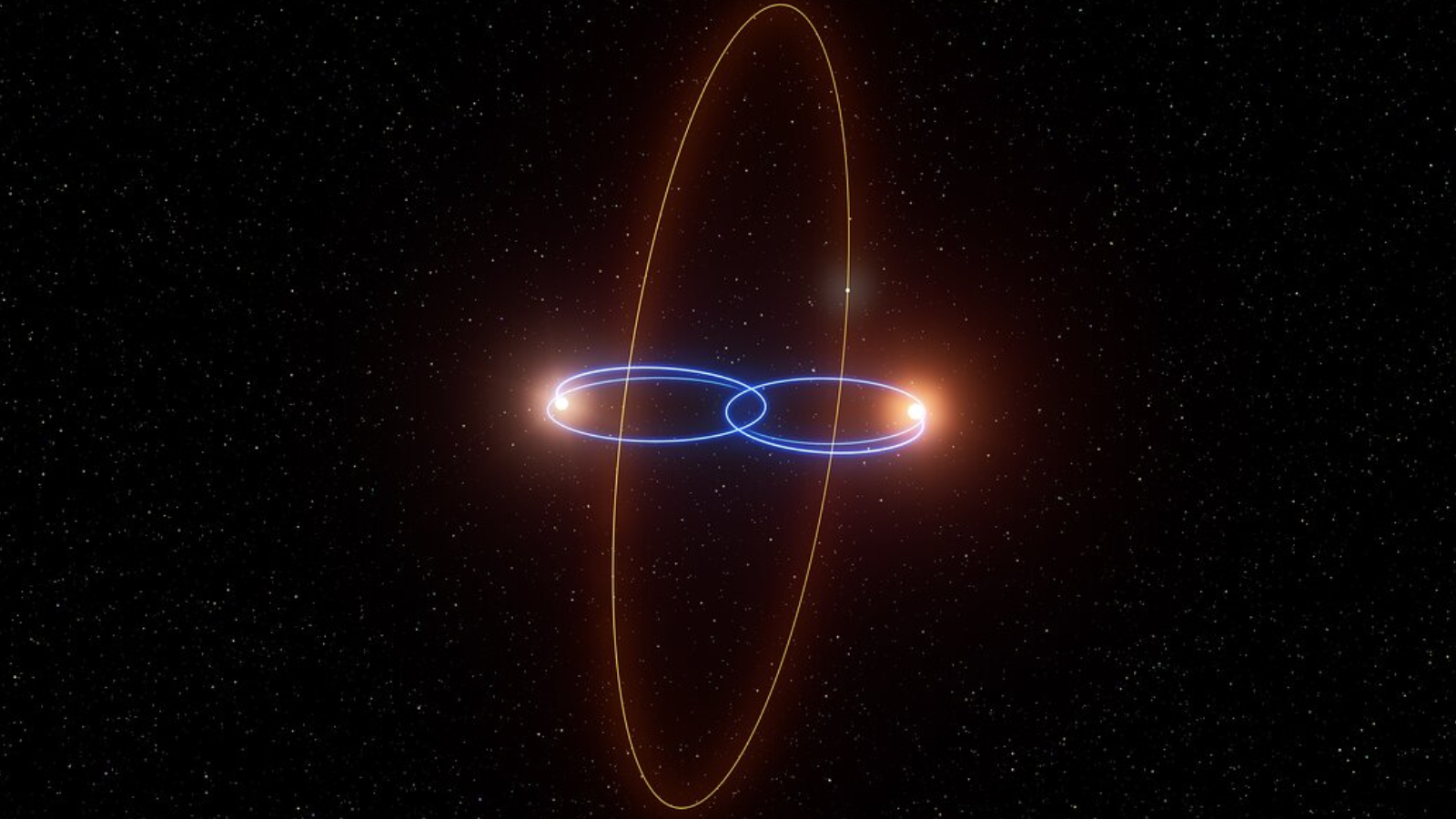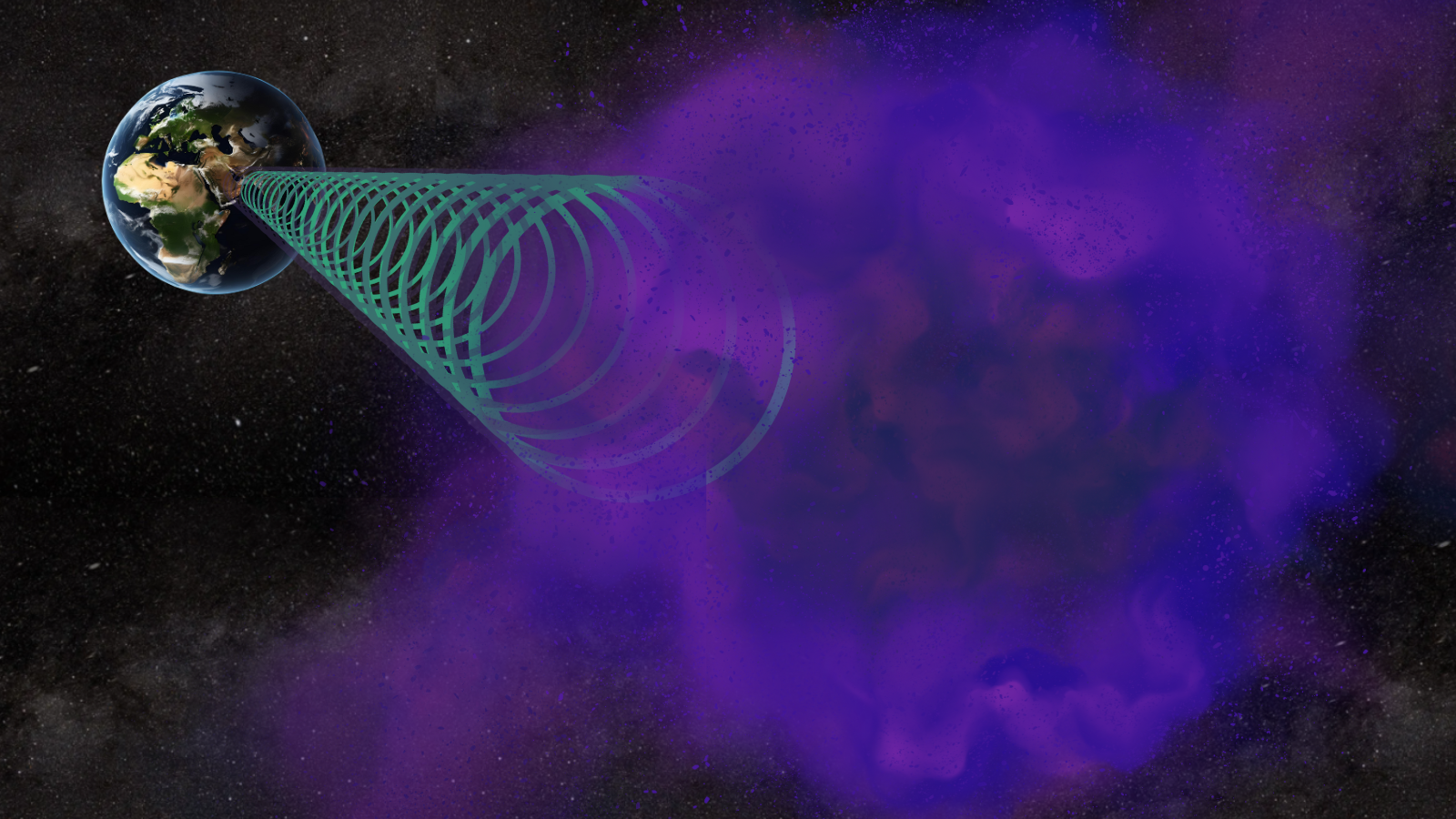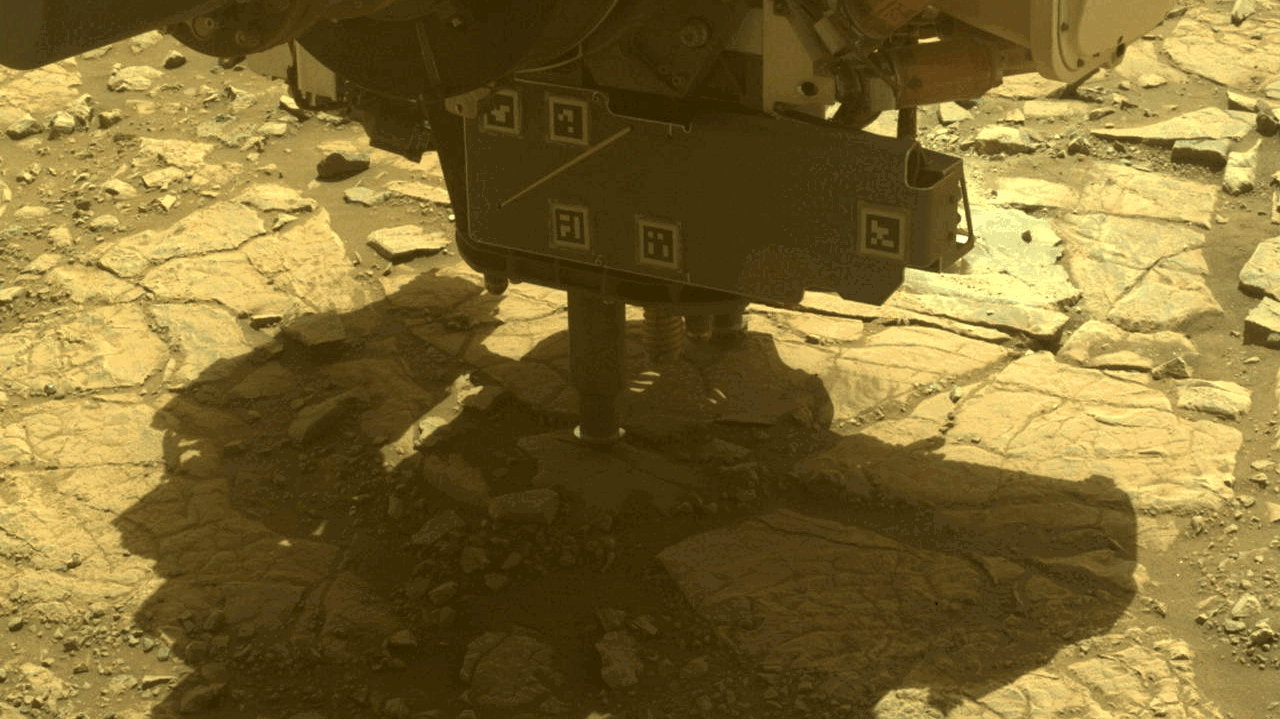Mars helicopter Ingenuity's historic 1st flights shed light on Martian dust dynamics
'There's a reason that helicopter pilots on Earth prefer to land on helipads.'
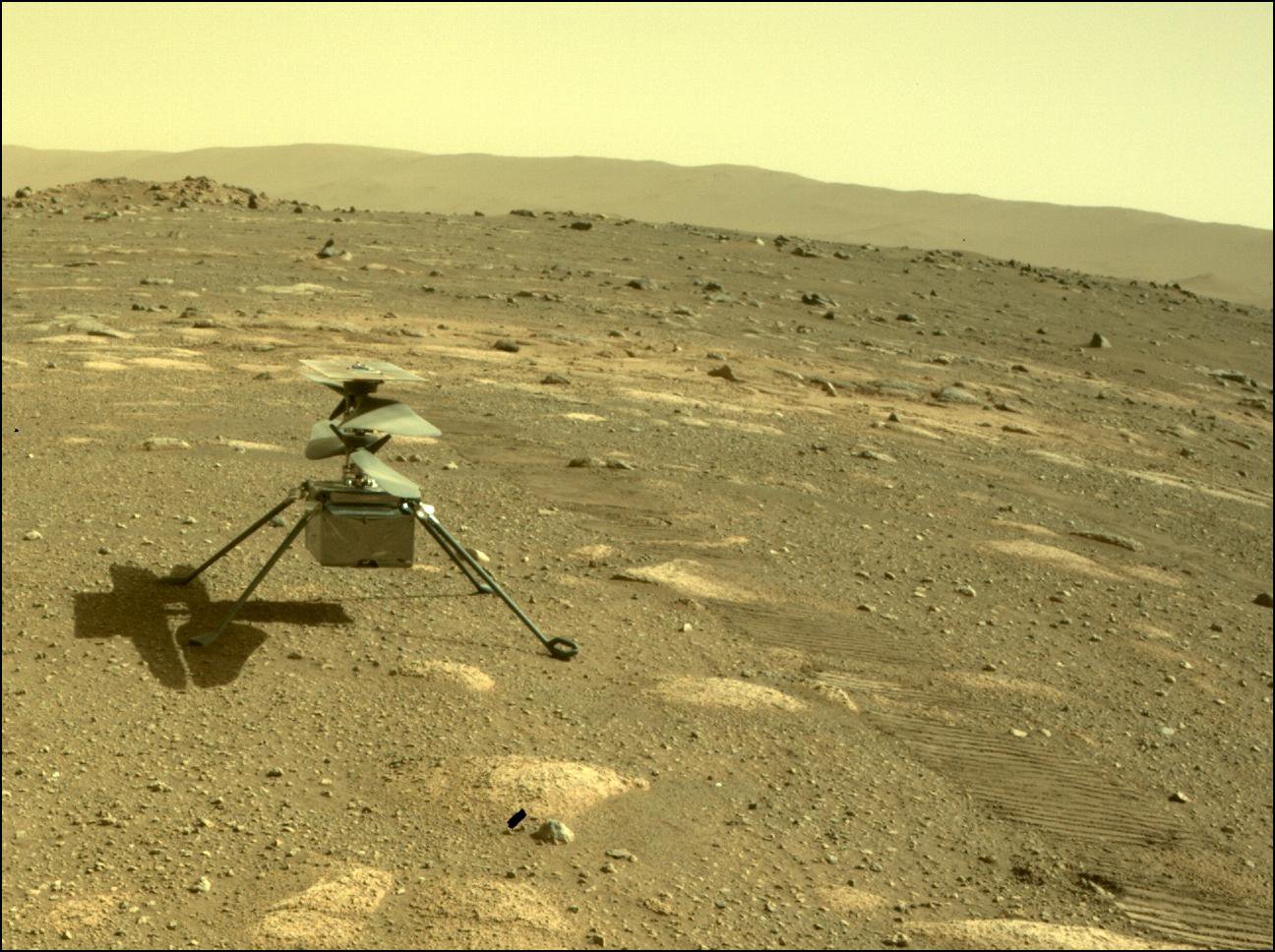
In April 2021, a camera on NASA's Perseverance Mars rover recorded its tiny robotic cousin Ingenuity lifting off on the Red Planet.
Foraying 10 feet (3 meters) into the Martian sky, the 4-pound (1.8 kilograms) Ingenuity helicopter made history that day, conducting the first powered flight on another world.
Using data from that and some of Ingenuity's other early sorties, scientists have now marked a first of their own: A comprehensive study of Mars dust dynamics — an important but elusive process that researchers have long struggled to understand, thanks to a lack of data on how dust behaves on the Red Planet.
"Space is a data-poor environment," study co-author Jason Rabinovitch, a professor at Stevens Institute of Technology in New Jersey, said in a statement. "It's hard to send videos and images back to Earth, so we have to work with what we can get."
Related: Mars rover Perseverance spots Ingenuity helicopter resting on sand dune (photo)
Rabinovitch's team gathered low-resolution videos of six Ingenuity flights sent home by Perseverance and measured the sizes and masses of dust clouds during the helicopter's liftoffs, maneuvers and landings. (Ingenuity has now flown more than 40 times on Mars, by the way, and is still going strong.) The study's findings will be important to steer spacecraft through seasonal dust storms, and could even be the first step to predicting them, team members said.
Each time Ingenuity flew, the team found, it kicked up a cloud of dust about 0.1% as massive as itself. Researchers warn that it’s difficult to draw direct comparisons, but the amount of dust Ingenuity generated is many times more than what a similar helicopter on Earth would kick up. Before each landing, the tiny helicopter kicked up dust when it was 4.6 to 11. 8 feet (1.4 to 3.6 m) above the Martian surface, the researchers found.
Get the Space.com Newsletter
Breaking space news, the latest updates on rocket launches, skywatching events and more!
All in all, the study underscores that Martian dust continues to be a nuisance to tiny helicopters like Ingenuity.
"There's a reason that helicopter pilots on Earth prefer to land on helipads," Rabinovitch said in the same statement. "When a helicopter lands in the desert, its downdraft can stir up enough dust to cause a zero-visibility 'brownout' — and Mars is effectively one big desert."
The Red Planet is notorious for routinely subjecting its robotic guests to lots of dust — huge storms, tiny devils and innumerable short-lived but troublesome winds that can envelop spacecraft with dust and stop them from doing many different tasks.
In late 2022, dust-caked solar panels suffocated NASA's InSight lander until it eventually lost contact with Earth. NASA’s longest-running Mars rover, Opportunity, got blanketed under a 2018 planet-wide dust storm and went incommunicado for eight whole months until it was ultimately declared dead.
Finally, Ingenuity suffered a communications glitch and later took a break for several weeks last year as it battled through the worst of the dust season.
Future off-Earth rotorcraft could face similar challenges as well. For example, in 2034, NASA's Dragonfly helicopter might touch down on a field of dunes on Saturn's moon Titan, yet another world alive with raging dust storms. And NASA plans to send two small Ingenuity-like helicopters aboard its Sample Retrieval Lander, which is scheduled to launch in 2028 to help bring back to Earth samples gathered by Perseverance.
Keeping dust off solar panels of these spacecraft for as long as possible is key to helping them survive these storms. (Dragonfly won't have to worry about sunlight, however; it will be nuclear-powered.) But the processes that contribute to dust behavior, like threshold wind conditions, have not been directly measured.
In the latest study, researchers used advanced image processing techniques to calculate the amount of dust and deduced wind speeds for each of the six Ingenuity flights they analyzed. As one example of their methods, the team looked for slight changes in light intensities of individual pixels in the videos, which allowed them to calculate the sizes and masses of dust clouds. The team also analyzed how the dust clouds behaved after forming, and found that they expanded in all directions irrespective of the direction or speed of winds.
When studying dust behavior, researchers factored in various conditions, of which a few were measurable: air pressure, humidity and temperature. To this end, numerous weather sensors on Perseverance recorded these conditions each time Ingenuity flew. However, a few variables, such as the quantity of dust present at specific locations, was hard to calculate.
Related: Massive Mars dust storms triggered by heat imbalances, scientists find
The latest study has taken scientists one step closer to understanding the behavior of Martian dust, but a lot remains to be unpacked.
The videos recorded by Perseverance "ended up showing Ingenuity lifting so much dust from the surface that it opened a new line of research," Mark Lemmon, a senior research scientist at the Space Science Institute Mars Science Laboratory and the study's first author, said in the same statement.
Dust is no doubt a major driver of weather on worlds like Mars. If only spacecraft could shake dust off their solar panels, spring back to life, and continue working! Since they cannot (yet), understanding dust behavior is probably the best we can do for now.
The research is described in a paper published Dec. 8, 2022 in the Journal of Geophysical Research: Planets.
Follow Sharmila Kuthunur on Twitter @Sharmilakg.
Follow us on Twitter @Spacedotcom or Facebook.
Join our Space Forums to keep talking space on the latest missions, night sky and more! And if you have a news tip, correction or comment, let us know at: community@space.com.

Sharmila Kuthunur is a Seattle-based science journalist focusing on astronomy and space exploration. Her work has also appeared in Scientific American, Astronomy and Live Science, among other publications. She has earned a master's degree in journalism from Northeastern University in Boston. Follow her on BlueSky @skuthunur.bsky.social
-
xler8rdoug Doubt I'm the first with this idea but knowing that dust on solar panels on our rovers are bad why can't the helicopter of the future be used to blow off the solar panels when needed. Could the helicopter have a function that it can vary the pitch of the blades to create a burst of air specifically for that and also the rover have a small heliport for the chopper to land on and recharge it's battery.Reply -
Buckman If they can design a vacuum cleaner to go to a recharging dock . I would think they could do for space rovers also.Reply -
xler8rdoug Reply
Just common sense. Easy to do.Buckman said:If they can design a vacuum cleaner to go to a recharging dock . I would think they could do for space rovers also.
